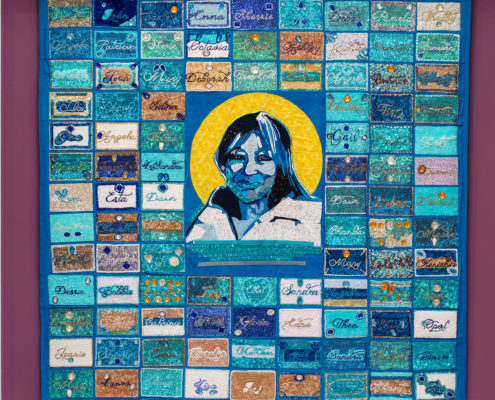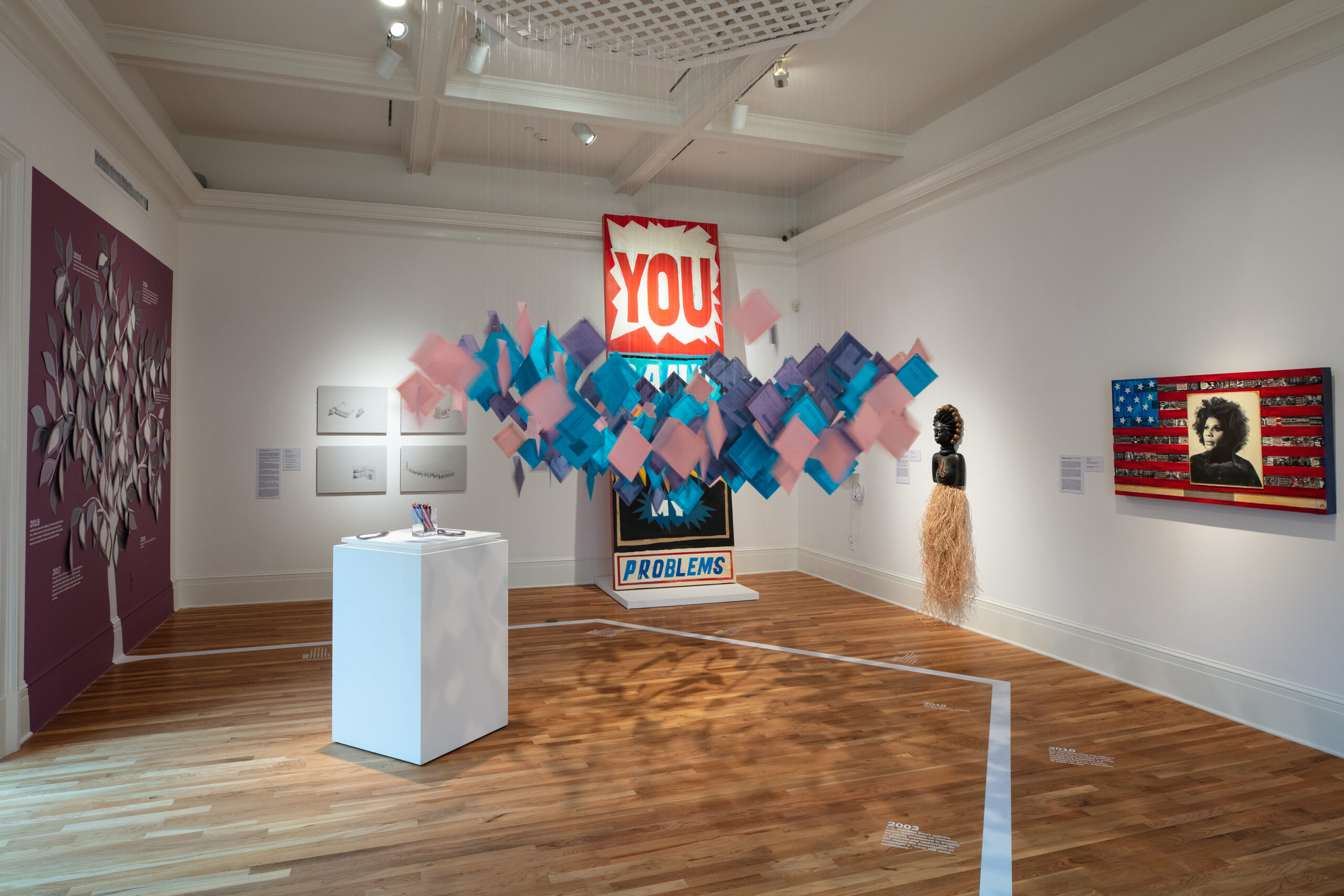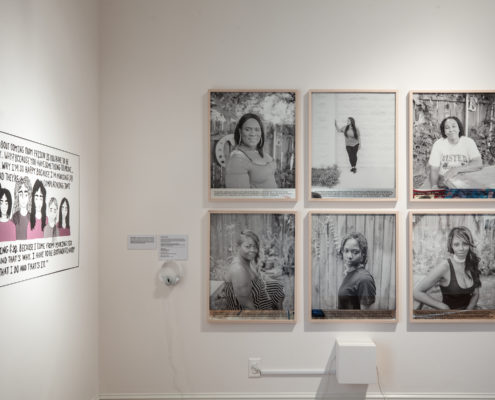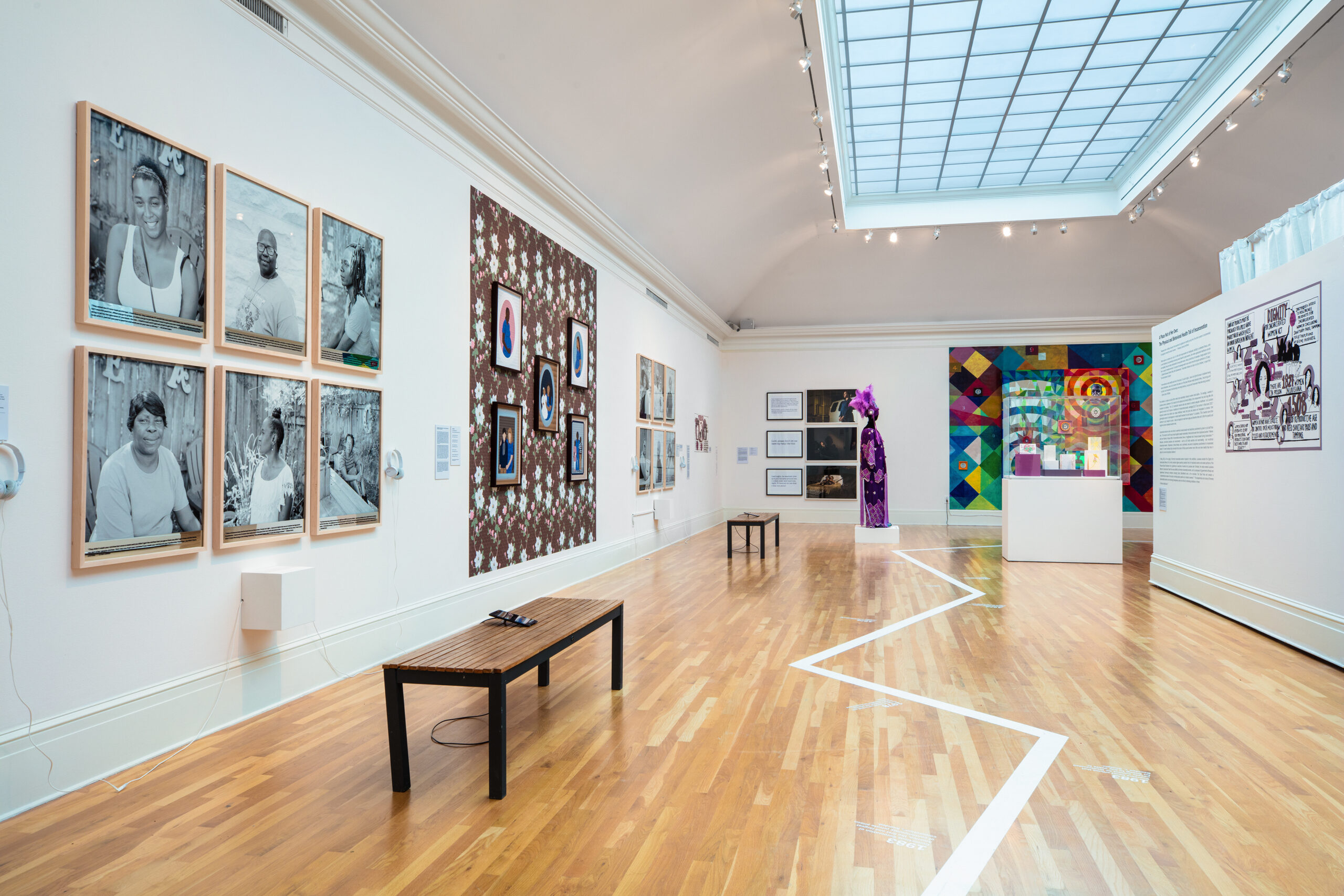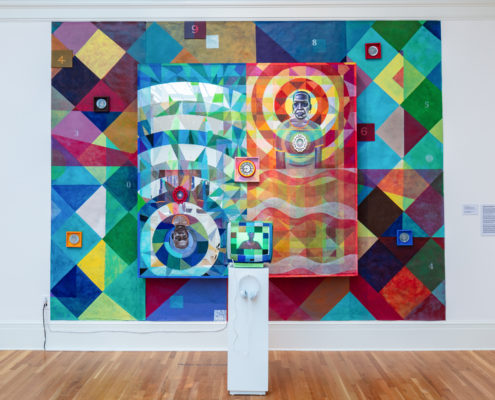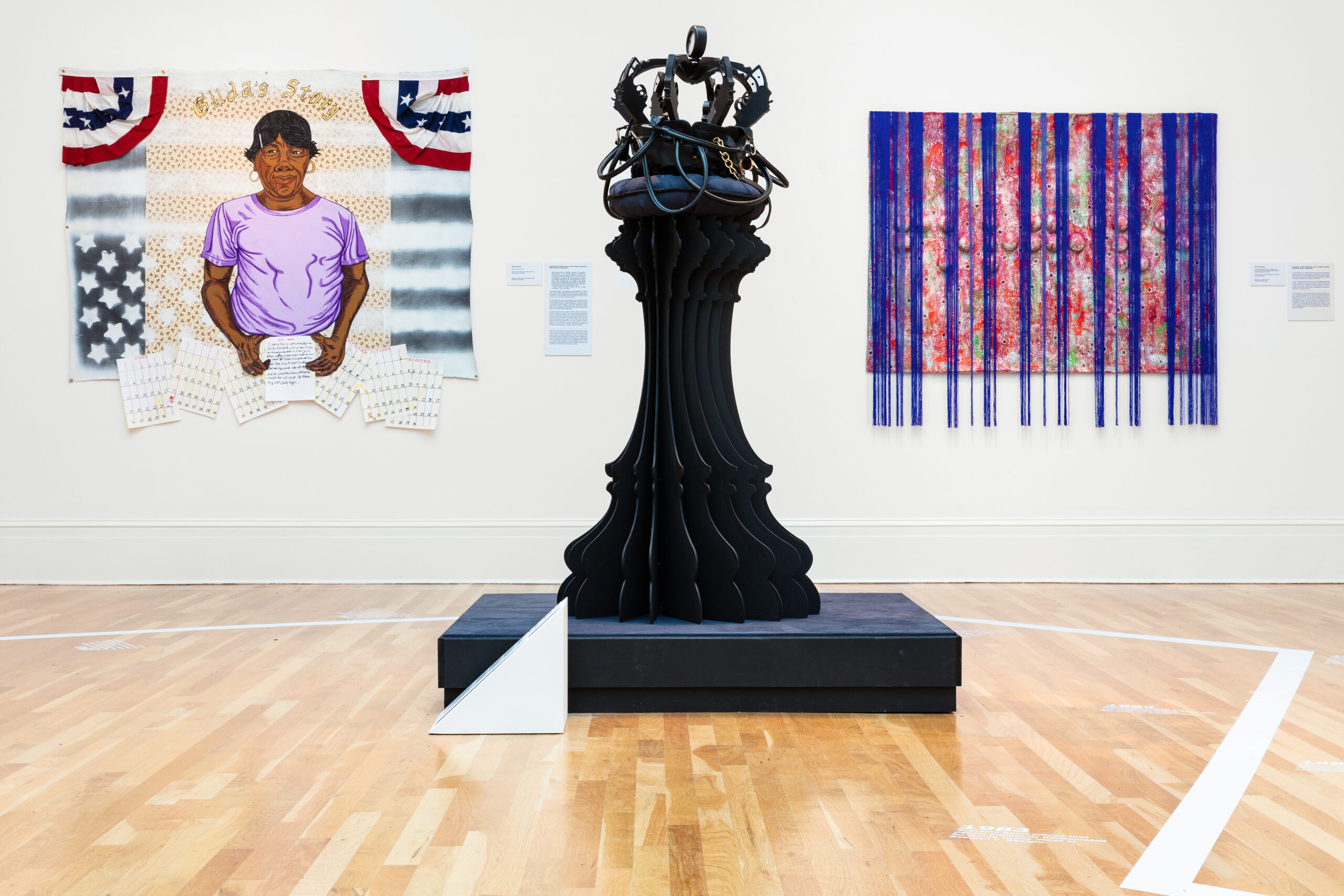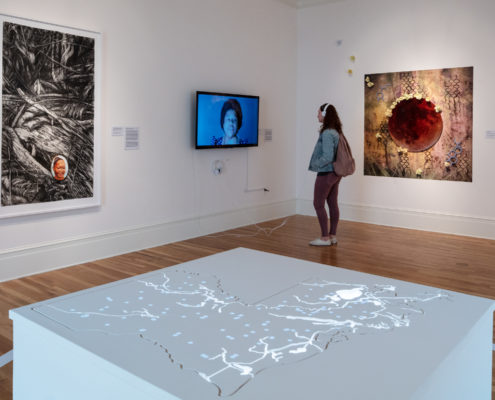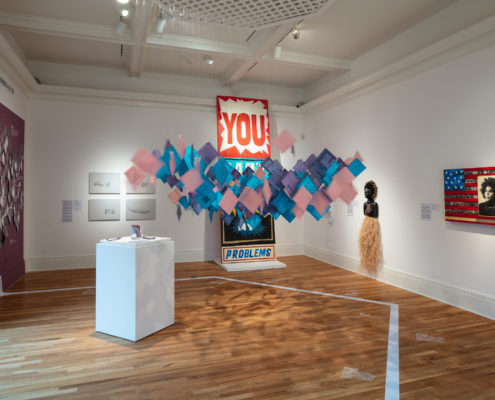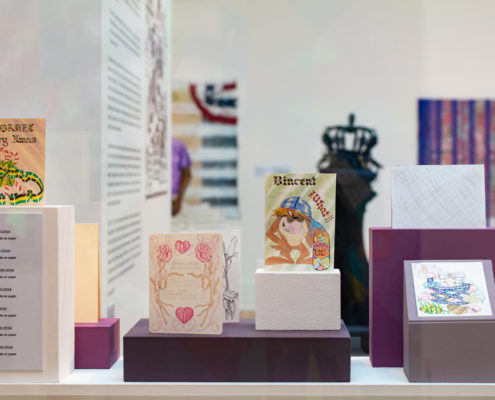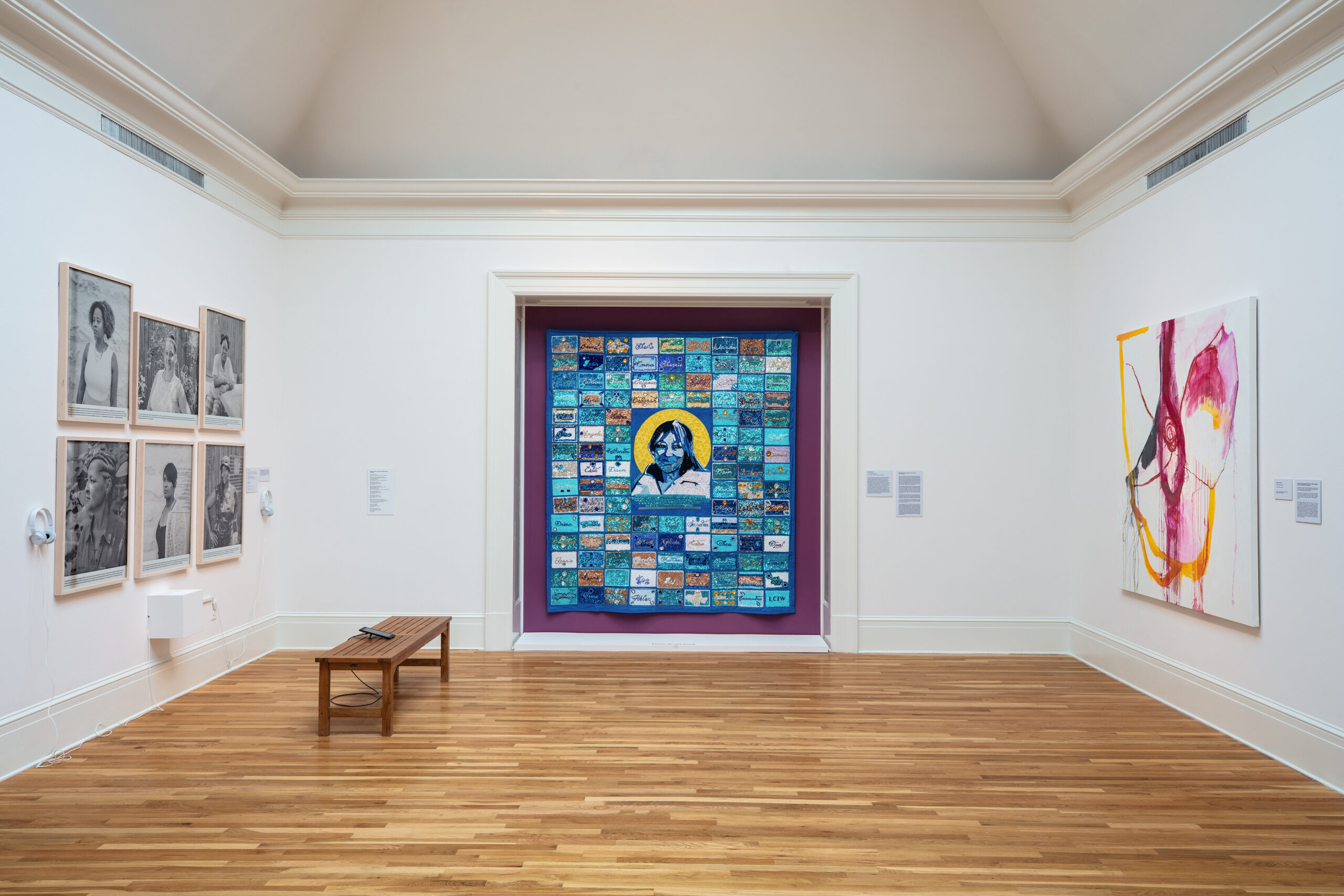Per(Sister): Incarcerated Women of Louisiana
- DurationJanuary 19 – July 6, 2019
- Works byKira Akerman, Ron Bechet, Lee Deigaard, Keith Duncan, Amy Elkins, Butch Frosch, Glenn Ford, The Graduates, L. Kasimu Harris, Cherice Harrison-Nelson, Ana Hernandez, Maria Hinds, Brandy Holmes, Epaul Julien, MaPó Kinnord, Henrietta Mantooth, Tammy Mercure, Anastasia Pelias, Sheila Phipps, Rontherin Ratliff, Devin Reynolds, Jackie Sumell, Nubian OmiSayad Sun, Taslim van Hattum, Carl Joe Williams, Ryn Wilson, Lynn Drury, Sarah Quintana, Queen Koldmadina, Spirit McIntyre, Margie Perez, Keith Porteous, Victor Atkins, Allison Beonde
- In Partnership With
- List Title
Since 1986, Louisiana has ranked in the top ten states nationwide for the highest incarceration rates. From 2005-2018, Louisiana ranked first in the nation and the world in holding people captive.[i] Louisiana only lost its title of “Incarceration Capital of the World” to Oklahoma after state reforms enacted in 2017 lowered our incarceration rate. Louisiana still far outpaces the nation, incarcerating 712 people per 100,000 compared to a national average of 450 people per 100,000.[ii]
Women are one of the fastest growing state prison populations. The incarceration rate nationwide for women has grown 834% over the last 40 years, according to the Prison Policy Initiative.[iii] Here in Louisiana, the incarceration rate for women is significantly higher than the national average.[iv] The majority of women in Louisiana are incarcerated for lower-level crimes, such as drug or property offenses.[v] About 80% of women imprisoned are mothers, of which the majority are the sole caregivers for their children.[vi] One in 12 children in Louisiana have an incarcerated parent.[vii] Women in jails are overwhelmingly survivors of reported abuse: 86% have experienced sexual violence; 77% have experienced partner violence, and 60% have experienced caregiver violence.[viii] Nationwide, 60% of women imprisoned did not have full-time employment at the time of their arrest[ix].
Newcomb Art Museum has partnered with formerly incarcerated women, community organizations, stakeholders, and those directly impacted by the prison system to create the exhibition Per(Sister), which is intended to share the stories of currently and formerly incarcerated women in Louisiana, and shine a light on the myriad issues as identified and expressed by the women themselves.
The experiences of incarcerated women are often unknown, overlooked, dismissed, or misunderstood. Per(Sister) presents the personal and intimate stories, in their own voices and in their own terms, of thirty women that persist in their drive for the integral survival of their mind, body, and soul.
Their stories come to life through the pairing of a “persister” and an artist who created a work inspired by her story, other stories take the shape of voice recordings, or handwritten messages, all with the intention of challenging misconceptions and uninformed assumptions. By building awareness of the situations arising before, during and after incarceration, the exhibition Per(Sister) seeks to find common ground and pathways for society to empathetically move forward together.
Per(Sister) examines themes such as the root causes of women’s incarceration, the social impact of long-term incarcerated mothers, the psychological and physical toll of incarceration, and the challenges and opportunities of reentry for formerly incarcerated women.
This will be the first in a series of three exhibitions at the Newcomb Art Museum exploring mass incarceration from a sustained point of view over the next decade. The exhibition at Newcomb will coincide with several city-wide programs, lectures, and opportunities for service that will inform and educate the community of the issues surrounding the criminal justice system.
Syrita Steib-Martin and Dolfinette Martin are the museum’s equal partners in the creation and development of this exhibition together with museum director, Monica Ramirez-Montagut, and museum curator, Laura Blereau. Mellon Fellow for Community Engaged Scholarship Megan R. Flattley served as the curatorial research assistant. Further support was provided by Operation Restoration and Women with a Vision. Special thanks to Prof. Andrea Armstrong for assisting in the writing of all exhibition texts and timeline.
Additional Context
According to the Pew Charitable Trust, Louisiana’s prison population peaked in 2012 at roughly 40,000, a fivefold increase since the late 1970s, growing much faster than the state’s overall population. Even with a reduction of 9% from 2012-2015, Louisiana still had more prisoners per capita than any other state and nearly double the national average. According to a report from Prison Policy, a Massachusetts-based research organization, Louisiana has the seventh-highest rate of incarcerated women in the world with 198 out of every 100,000 women in the state behind bars. The Sentencing Project estimates that the rate growth for female imprisonment in the US has been twice as high as that of men since 1980 and that more than 60% of women in state prisons have a child under age 18. In the fiscal year 2017, Louisiana Governor John Bel Edwards and Department of Corrections Secretary James LeBlanc called for reforms that would “reduce the state prison population significantly” which highlights that prison reform is a need recognized at the highest level of the state. This is the current social and political climate of Louisiana regarding this issue, the data is there but the faces and complexities of the individual stories are missing –a need our exhibition, through the works of these socially engaged artists intends to address.
Statement of Intent
The Newcomb Art Museum of Tulane University builds on the Newcomb College legacy of education, social enterprise, and artistic experience with a focus on the contributions of women and matters of social justice. Per(Sister): Incarcerated Women in Louisiana explores one of the most critical issues affecting our immediate community, mass incarceration. In particular, the exhibition will explore the specific ways in which incarceration affects women and the impact this has on their communities.
Per(Sister) will deploy the virtues of art as a benign and uplifting vehicle of communication to share the diverse stories of formerly and currently incarcerated women. Newcomb hopes to appeal through the senses and the power of storytelling to informally educate visitors on matters of our criminal justice system, the prison-industrial complex, and the current initiatives seeking their reform. Developed in partnership with formerly incarcerated women, the content of the exhibition addresses some of the most prevalent concerns for the women, from their own, well-informed, point of view. Participating individuals such as artists and community organizers hope to create change every day, each in their own way, by raising awareness, challenging negative stereotypes, fostering empathy and compassion, building community, and the understanding that social development relies on opening someone’s mind to move forward together.
The intent of this exhibition is to begin a conversation with those who want to know more and to direct them towards resources culled from a diverse range of exhibition partners and experts including women who were incarcerated, invested community organizations, stakeholders, service groups, and Tulane faculty and students. We envision the museum as a space in which information is made available, conversation is facilitated, collaborative relationships are established, and community sentiment is built. To unpack and understand the complex reality of the carceral system in the United States requires the contribution of many different voices. This exhibition seeks to engage as many of those voices as possible, while providing visitors with the tools needed to dive deeper, make educated decisions, and, if so inclined, take action.

(Image Above) The Life Quilt, 2018, featuring the names of 107 women serving life sentences in 2017 in Louisiana. Beaded by Black Masking Indians, portrait painting by Brandan ‘BMike’ Odums and sewn by Louise Mouton Johnson. Produced by The Graduates, co-created and co-sponsored by ArtSpot Productions and Kumbuka African Drum & Dance Collective. The Graduates are Robert Rauschenberg Foundation Artist as Activist Fellows; and supported in part by grants from The Andrew W. Mellon Foundation and the Alternate ROOTS Partners in Action Program, made possible by support from Nathan Cummings Foundation, Ford Foundation, National Endowment for the Arts, Andrew W. Mellon Foundation and Surdna Foundation.
Support the Exhibition
There are several opportunities for sponsorship for this exhibition. From supporting educational workshops and tours for Orleans and Jefferson parish students to providing funding for public engagement programs to underwriting artist performances and lectures, you can be involved no matter your budget! Reach out to museum@tulane.edu today to learn more about how you can support this incredibly important exhibition and make sure it reaches the greatest number of people possible.

